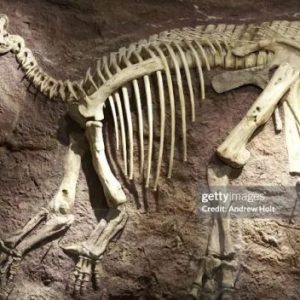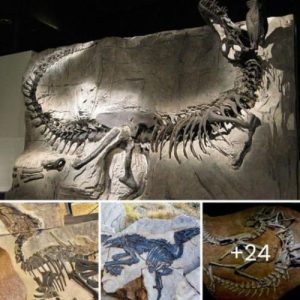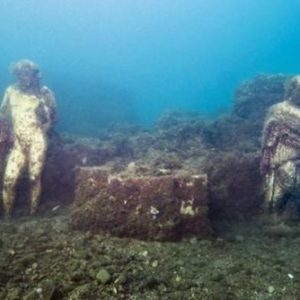
The study of prehistoric life and ancient creatures has always been a source of fascination and wonder for scientists and enthusiasts alike. The Late Jurassic period, which spanned from approximately 163 to 145 million years ago, was a time when dinosaurs roamed the Earth.
During this era, North America was home to a diverse array of dinosaur species, including the enigmatic Othnielosaurus. This article delves into the fascinating world of Othnielosaurus, a dinosaur that has piqued the curiosity of paleontologists and sheds light on the mysteries of the Late Jurassic.
Othnielosaurus: A Brief Introduction
Othnielosaurus is a dinosaur genus that falls under the broader category of theropods. These were bipedal, carnivorous dinosaurs known for their sharp teeth, agile bodies, and, in many cases, remarkable speed.
Othnielosaurus was a relatively small theropod, measuring approximately 10 to 13 feet in length and weighing around 100-200 kilograms. This dinosaur lived during the Late Jurassic period and was first discovered in North America.
The name “Othnielosaurus” pays homage to Othniel Charles Marsh, a prominent paleontologist known for his extensive work during the late 19th century. The discovery of Othnielosaurus fossils has provided researchers with invaluable insights into the diversity and behavior of Late Jurassic dinosaurs.

Fossil Discoveries: Unraveling the Enigma
Othnielosaurus fossils have been unearthed in several locations across North America. Notably, the Morrison Formation, a geological formation spanning several U.S. states, has yielded a wealth of Late Jurassic dinosaur fossils, including those of Othnielosaurus. The discovery of these fossils has been instrumental in shedding light on the life and times of this mysterious dinosaur.
The most remarkable aspect of Othnielosaurus fossils is their incomplete nature. Many paleontologists have only been able to examine partial skeletal remains, making it challenging to construct a complete picture of this dinosaur. Nonetheless, the available fossils have allowed scientists to draw some important conclusions.
The Othnielosaurus Diet
The dentition of Othnielosaurus offers intriguing insights into its dietary habits. Like many other theropods, Othnielosaurus had serrated, knife-like teeth designed for tearing through flesh. This suggests that it was primarily carnivorous, preying on smaller dinosaurs and potentially other prey animals of the Late Jurassic ecosystem.

Furthermore, the structure of the jaw and bite force analysis has led scientists to speculate about its hunting strategy. Othnielosaurus may have used a combination of speed and precision to capture its prey, much like modern raptors.
Behavior and Social Structure
The study of dinosaur behavior and social structure has always been challenging due to the limited information provided by fossils. However, some inferences can be made about Othnielosaurus based on its physical characteristics and its place in the Late Jurassic ecosystem.
Othnielosaurus, being a theropod, was likely a solitary hunter. Its size and agility would have made it an efficient predator, but it may not have engaged in complex social behaviors like herding or pack hunting seen in some larger theropods.
Othnielosaurus and the Late Jurassic Ecosystem
To understand Othnielosaurus better, it’s essential to place it within the context of the Late Jurassic ecosystem. This period was characterized by a diverse range of dinosaur species, including iconic giants like Brachiosaurus and Allosaurus. Othnielosaurus played a unique role as a smaller theropod, likely occupying a niche as a mid-sized carnivore.
The Morrison Formation, where many Othnielosaurus fossils have been discovered, was a dynamic environment with a mix of wet and dry seasons, supporting a variety of plant and animal life. Othnielosaurus would have shared its world with herbivorous dinosaurs, such as the long-necked sauropods and armored dinosaurs like Stegosaurus.

The Ongoing Quest for Knowledge
The study of Othnielosaurus is ongoing, with paleontologists continually unearthing new fossils and refining their understanding of this enigmatic dinosaur. Advances in technology and research methodologies have allowed scientists to extract more information from fragmentary fossils, contributing to a more detailed portrait of Othnielosaurus.
One exciting aspect of paleontology in the 21st century is the use of advanced imaging techniques, such as CT scans and 3D modeling, which enable researchers to explore the internal structures of fossils. These techniques can reveal intricate details of Othnielosaurus’ anatomy and provide further insights into its biology.
The Legacy of Othnielosaurus
Othnielosaurus may not be as famous as some of its Late Jurassic counterparts, but its importance in understanding the prehistoric world cannot be understated. As a small theropod, it offers a valuable perspective on the diversity of life during this time and the intricate web of predator-prey relationships that shaped the Late Jurassic ecosystem.
The study of Othnielosaurus is a testament to the tenacity and dedication of paleontologists who tirelessly work to unlock the secrets of our planet’s ancient past. With each new discovery, we move one step closer to unraveling the mysteries of this Late Jurassic enigma.
In conclusion, Othnielosaurus, though a lesser-known dinosaur, holds a special place in the world of paleontology. Through the examination of its fossils and the use of cutting-edge technology, scientists continue to unearth the secrets of this Late Jurassic predator, enriching our understanding of the prehistoric world and the creatures that once roamed North America. The story of Othnielosaurus reminds us that even the most mysterious and enigmatic creatures can offer valuable insights into the Earth’s ancient past.






